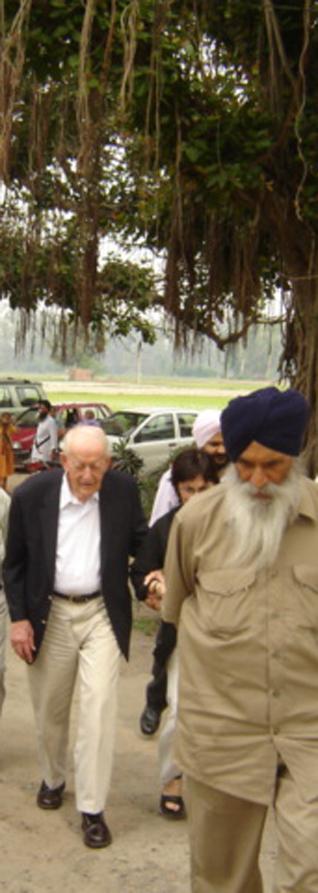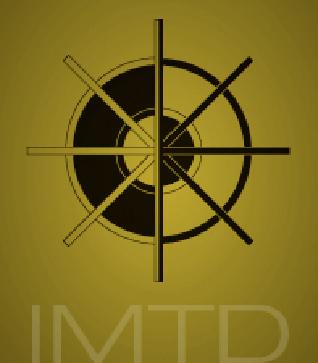Partition
Bridging The Great Divide: Guru Nanak's Kartarpur
by EDDIE WALSH
In the next few days, U.S. Ambassador (ret.) John W. McDonald, Chairman and CEO of the Institute for Multi-Track Diplomacy (IMTD), will formally call on the foreign ministers of India and Pakistan to move forward with a confidence-building measure that would establish a peace corridor between two of the holiest Sikh religious sites - Dera Baba Nanak in India, and Kartarpur Sahib in Pakistan.
The two sites are only six kilometres apart, and IMTD believes the move will be welcomed by many in the 36 million strong Sikh community worldwide, particularly the nearly two-thirds who reside in India.
McDonald, who believes the peace corridor is of critical importance to larger trust-building measures in the region, says he will remind the foreign ministers of their interest in moving forward on the Sikh peace corridor in letters of gratitude that follow the Indian foreign minister’s agreement to implement another IMTD peace-building programme, a new bus route linking Pakistani Muslims with a sacred mosque in Indian-controlled Kashmir.
‘Since 1947, the three Sikh shrines in Dera Baba Nanak and Kartarpur Sahib have been set apart by a border which didn’t exist when they were built,’ he says. ‘Every day since separation, millions of Sikhs pray to make the journey between the shrines. The Peace Corridor would answer those prayers without undermining Indian or Pakistan security. It also would mark one small step in bringing together Indians and Pakistanis who have been torn apart by years of conflict.’
IMTD has drafted a 55-page feasibility study outlining how the corridor could be built, complete with architectural schematics and engineering diagrams. The IMTD report was to be drafted by the Indian government following a commitment by a former foreign minister to move forward on the feasibility study. However, the 2002 Mombasa bombings derailed those plans as tensions escalated between the two governments.
Rather than wait for the idea to come back into favour with the current governments, McDonald made the decision to develop a feasibility study, and raised the $200,000 required to support the work entirely from private donations.
‘You can’t always expect governments to do everything,’ McDonald says. ‘This unique confidence-building measure for a Sikh Peace Corridor is ideally suited to be developed and put forward by an experienced non-governmental organization like IMTD.’ He adds that the peace-building effort will include business leaders, private citizens, religious leaders, and media heads in the hope that they ‘can bring weight to bear on the governments in ways those inside government often can’t.’
‘It would be a huge mistake to think that only government officials be diplomats,’ he says. ‘Look at the Sikh Diaspora. They are willing to put up the $17 million required to build the peace corridor. This takes government funding out of the equation …Sikh business leaders on both sides are already willing to build new businesses within the corridor.’
Of course. IMTD is only one voice of many calling for the governments in India and Pakistan to implement cross-border programmes at this time, but McDonald told me he hopes that his organization’s long-standing commitment to the region will help ensure that his voice is heard.
‘This is too important of an issue for us to accept inaction,’ he said. ‘The peace corridor needs to move forward.’
Eddie Walsh is a freelance journalist and academic based in Washington DC. His work has been featured by ISN Insights, The East Asia Forum, The Jakarta Globe, and The Journal of Energy Security. He is currently DC / Pentagon correspondent for The Diplomat and recently completed post-MA coursework at The Johns Hopkins University SAIS.
[Courtesy: The Diplomat]
August 24, 2011
Conversation about this article
1: Dr. Harbans Kaur Virik (Kuala Lumpur, Malaysia), August 24, 2011, 11:20 AM.
Floods reported in Lahore today. Has the Ravi again overflowed its banks? Will it change its course? My thoughts race back to the late thirties and early forties of the last century - nearly 70 years ago to my visit to Kartarpur and Dera Baba Nanak, now on either bank of the Ravi. I do not remember crossing any river. I remember being taken to Kartarpur in a van in the company of a delightful old lady who introduced herself as coming from the 'ghar' (house) of General Hari Singh Nalwa. I felt honoured. All I can remember of this trip is coming back excited, feeling supercharged with a sense of fulfillment of having accomplished an inner yearning that I so desperately wanted to share with my parents in Penang with whom I had had no contact since the Japanese Occupation in December 1941. I stayed in Dera Baba Nanak for three months and fully recovered my health, having had a long stint in my college hospital down with typhoid, there being no antibiotics for it in those days. Three months of utter bliss - no contact with the external world. No electricity, no piped water, no reading at night. Fresh sugar cane juice in the fields and no hang ups on sterility! Used to see Kabir Bedi, then 3-4 years old, being led by his mother in an around the villages. She was an Austrian dressed very humbly in coarse hand-spun Punjabi garb - an icon, and a very active social worker, trying her best. She eventually went into a Buddhist monastery and rose to the highest level a woman could achieve in the hierarchy of the monastery, a venerable Bhikhsuni. Kabir went his own way. In the meantime, I went back to my medical studies, having lost one year - the most memorable one, but fully restored back to health. Who created this? It was Guru Nanak's Grace. I am already walking on that Bridge. "Haa-o aa-i-aa dhoorahu chal ka mai take ta-o sarnaa-ay jee-o" - 'I have come so far seeking Your sanctuary.' [EDITOR'S NOTE: The author of this note, Dr. Harbans Kaur, was the first Sikh lady doctor in Malaysia. She eventually retired as the Chief Pediatrician in Malaysia. She is now 89.]
2: Sangat Singh (Kuala Lumpur, Malaysia), August 24, 2011, 3:38 PM.
Bhenji Harbans Kaur Virk is a doyen, an icon. Though frail of body, she has an indomitable spirit and has a lot to tell. I have been pestering her forever to write. Thank you, Bhenji. You have a lot more to write.
3: Tejpreet (Penang, Malaysia), August 25, 2011, 1:17 AM.
And perhaps, to bridge the gap between the blueprint of the "Divine Bridge" to actual manifestation, we could be treated to more exciting tales ... for there are precious few who can boast of thoughts racing back to the thirties and forties with such clarity and profound observance. Kabir Bedi, incidentally, didn't inspire this comment.
4: Harbans Lal (Dallas, Texas, U.S.A.), August 27, 2011, 1:10 PM.
Kartarpur Sahib is certainly among the top Sikh Shrines. Whereas Guru Nanak's message began on the bank of the Bein Rivulet at Sultanpur Lodhi, his life-work attained its completeness at Kartapur where Guru Nanak spent the last 18 years of his life. There is not much research work done on either of these towns. I should point out that Dr. Gurinder Singh Maan has published two papers on Kartarpur that I recommend your readers as must-reads.




